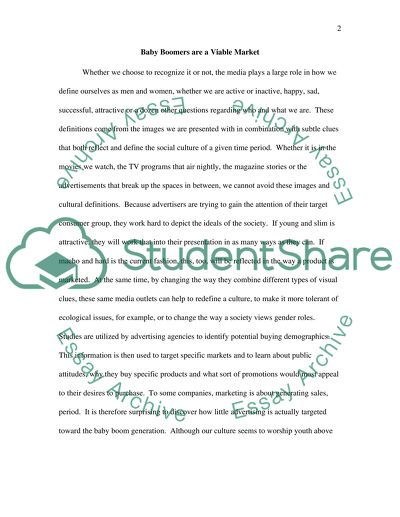Cite this document
(Baby Boomers are a Viable Market Term Paper Example | Topics and Well Written Essays - 2500 words, n.d.)
Baby Boomers are a Viable Market Term Paper Example | Topics and Well Written Essays - 2500 words. Retrieved from https://studentshare.org/sociology/1552602-the-baby-boom-generation
Baby Boomers are a Viable Market Term Paper Example | Topics and Well Written Essays - 2500 words. Retrieved from https://studentshare.org/sociology/1552602-the-baby-boom-generation
(Baby Boomers Are a Viable Market Term Paper Example | Topics and Well Written Essays - 2500 Words)
Baby Boomers Are a Viable Market Term Paper Example | Topics and Well Written Essays - 2500 Words. https://studentshare.org/sociology/1552602-the-baby-boom-generation.
Baby Boomers Are a Viable Market Term Paper Example | Topics and Well Written Essays - 2500 Words. https://studentshare.org/sociology/1552602-the-baby-boom-generation.
“Baby Boomers Are a Viable Market Term Paper Example | Topics and Well Written Essays - 2500 Words”. https://studentshare.org/sociology/1552602-the-baby-boom-generation.


